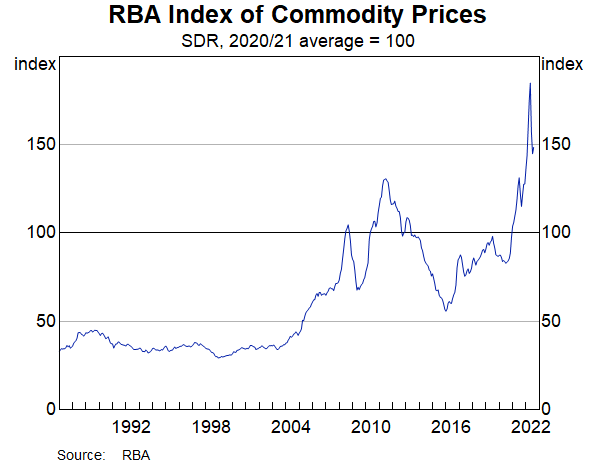
Recent Trends in the Terms of Trade
Economics (Year 12) - Terms of Trade
Christian Bien
What are Net Barter Terms of Trade?
Image Source: World Bank, Net Barter Terms of Trade Index, 2019
Net Barter Terms of Trade records changes in the terms of trade to the base year at 2000. The figures on the graph itself are irrelevant, what is relevant is the favourable and unfavourable movements in terms of trade.
Recent Trends in Terms of Trade

Image Source: Reserve Bank of Australia, Commodity Price Index July 2021
As stated on the previous page, terms of trade are the index of export prices over the index of import prices. As import prices tend to be more stable than export prices, we'll be focusing on export prices in analysing recent trends. Australian export prices are largely linked to commodity prices with distinct similarities to be made between the movements in terms of trade and movements in commodity prices.
Key Events that Changed the Terms of Trade
The Global Financial Crisis - 2008 to 2009 (Unfavourable Movement)
The unfavourable position from an index of 174 to 162 was likely due to the falls in commodity prices which saw the index fall from approximately 137 to 80. A fall in commodity prices results in a fall in export prices relative to import prices, causing an unfavourable movement in the terms of trade. The unfavourable terms of trade was also supported by the large depreciation of the currency to a low of $0.62 USD.
The Mining Investment Boom - 2009 to 2011 (Favourable Movement)
High growth in commodity prices from approximately 80 to 168 saw the export price index increased considerably relative to import prices, creating favourable terms of trade. The sharp increase in commodity prices is also reflected by a sharp increase in the terms of trade from 162 to 200 on the index. The higher terms of trade were also supported by high exchange rates that reached a peak of $1.10 USD, reducing the price of imports.
Post Mining Boom - 2012 to 2020 (Unfavourable Movement)
The fall in the commodity price index from approximately 168 to 75 saw export prices fall greatly relative to import prices. As expected, the terms of trade were unfavourable and sharply decreased from 200 to 148 on the index.
COVID-19 - 2020 - Now (Favourable Movement)
The recovery in commodity prices arising from the COVID-19 pandemic has seen a boost to Australia's terms of trade. While the data goes up to 2019, we can expect the terms of trade to be continually boosted by the sharp rise in commodity prices, in particular of iron ore and gold which have seen record prices.